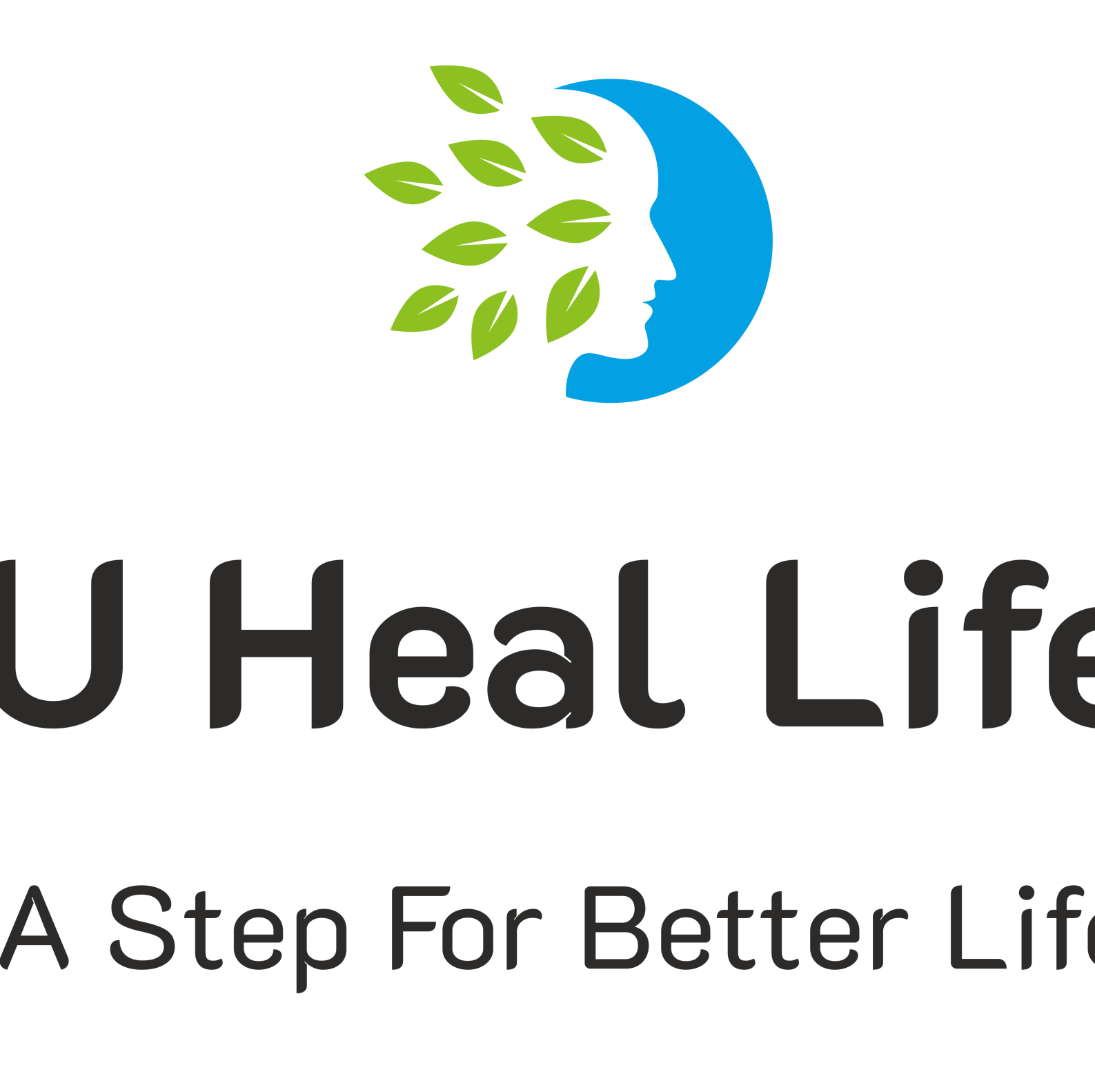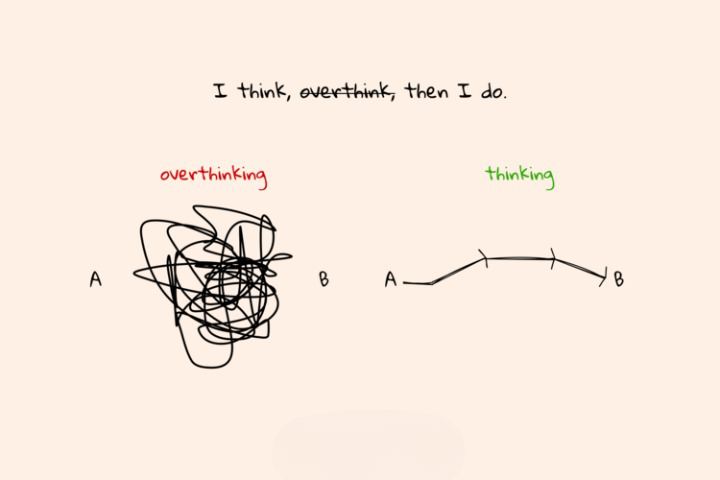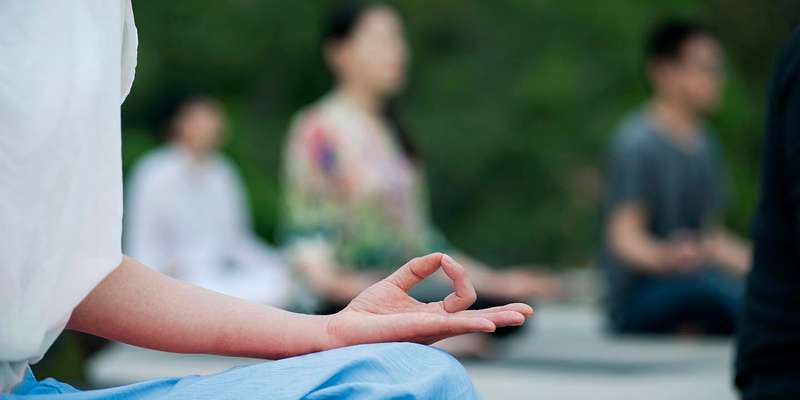Tips to stop overthinking and dealing with possible anxiety
When you’re calm, you can think your way through a problem instead of just worrying about it. Think about the worst thing that can happen, how likely that is and what you could do if it happens. In a stressful situation, think about the different ways you can respond and decide which one is the most intelligent.
Don’t make mountains out of molehills.
When you use the thinking brain, you get control of the emotional brain, and you feel better.
Also, replace negative thoughts with positive thoughts. Count your blessings and remind yourself of your successes.
The treatments for anxiety range from simple stress reduction methods to therapy and medication.
Don’t overlook stress management – it can help even with very bad anxiety.
Video – a lot of helpful information, including the 3-part program of Brown and Gerbarg –
Thought patterns are like habits, and like habits, they are tough to break, but it is possible to change them. It might be easier to add good thought patterns and that way increase the amount of time you think healthily/positively, to balance out the bad. Anxiety and bad thoughts are normal functions and can’t be completely stopped, but it can be reduced to a manageable and healthy level.
Anxiety – an Overview and Ways to Treat It
Introduction
Do you often feel anxious, or do you know someone else who is? Read on to find about more about what it is it, and learn a number strategies to help prevent it, or reduce the severity of the symptoms if you have it.
Anxiety is a common mental health problem, which is prevalent throughout the world and can be really serious in some cases. Studies show that more than 1 in 10 people will develop a disabling anxiety disorder at some stage in their life.
Anxiety is usually assessed on a degree of severity, ranging from mild, to moderate, to severe.
There are a number of different anxiety disorders, which include: generalized anxiety disorder, phobias, social anxiety disorder, separation anxiety disorder, agoraphobia, panic disorder, obsessive-compulsive disorder, and selective mutism.
Symptoms
The symptoms associated with anxiety are quite varied, and can range from quite mild or to quite severe.
1) Behavioural – social withdrawal, sleeping problems, loss of appetite, increased motor tension.
2) Emotional – feelings of dread, trouble concentrating, feeling tense or jumpy, anticipating the worst, irritability, restlessness, blank mind, nightmares, obsessions about sensations, sense of ‘deja vu’, feeling trapped in your mind.
3) Cognitive – thoughts about suspected dangers, such as fear of dying, believing that chest pains are heart attack, believing shooting pains in your head are a tumor or aneurysm, feeling an intense fear when you think of dying, or you may think of it more often than normal, or can’t get it out of your mind.
4) Physiological – headaches, vertigo, digestive problems, nausea, shortness of breath, palpitations, and fatigue.
Cause
The risk factors associated with anxiety include:
1) Neuroanatomical – Neural circuitry involving the amygdala (which regulates emotions like anxiety and fear, stimulating the HPA Axis and sympathetic nervous system) and hippocampus (which is implicated in emotional memory along with the amygdala) is thought to underlie anxiety. People who have anxiety tend to show high activity in response to emotional stimuli in the amygdala.
2) Genetics – Genetics and family history may put an individual at increased risk of an anxiety disorder, but generally external stimuli will trigger its onset or exacerbation.
3) Medical conditions – Many medical conditions can cause anxiety. This includes conditions that affect the ability to breathe, like COPD and asthma, and the difficulty in breathing that often occurs near death. Conditions that cause abdominal pain or chest pain can cause anxiety and may in some cases be a somatization of anxiety.
4) Substance-induced – Several drugs can cause or worsen anxiety, whether in intoxication, withdrawal or from chronic use. These include alcohol, tobacco, cannabis, sedatives (including prescription benzodiazepines), opioids (including prescription pain killers and illicit drugs like heroin), stimulants (such as caffeine, cocaine and amphetamines), hallucinogens, and inhalants.
5) Psychological – Poor coping skills (e.g., rigidity/inflexible problem solving, denial, avoidance, impulsivity, extreme self-expectation, negative thoughts, affective instability, and inability to focus on problems) are associated with anxiety. Anxiety is also linked and perpetuated by the person’s own pessimistic outcome expectancy and how they cope with feedback negativity. Temperament (e.g., neuroticism) and attitudes (e.g. pessimism) have been found to be risk factors for anxiety.
6) Social – Social risk factors for anxiety include a history of trauma (e.g., physical, sexual or emotional abuse or assault), early life experiences and parenting factors (e.g., rejection, lack of warmth, high hostility, harsh discipline, high parental negative affect, anxious childrearing, modelling of dysfunctional and drug-abusing behaviour, discouragement of emotions, poor socialization, poor attachment, and child abuse and neglect), cultural factors (e.g., stoic families/cultures, persecuted minorities including the disabled), and socioeconomics (e.g., uneducated, unemployed, impoverished although developed countries have higher rates of anxiety disorders than developing countries).
Tip 1: Mindfulness
Mindfulness is a psychological process, which involves bringing one’s attention to what you are experiencing in the present moment, which can be developed through the practice of meditation.
To perform mindfulness you must adopt a particular orientation toward one’s experiences in the present moment, which is characterized by a mixture of acceptance, curiosity, and openness.
Mindfulness practice has been shown to reduce symptoms of depression, stress, anxiety, and can is also used to treat drug addiction.
1) Awareness – Notice the thoughts which arise in your mind and the sensations that feel in your body. Do they feel hot or cold? Notice your heartbeat. Be aware of your breathing. Allow yourself to feel these sensations without resistance
2) Acceptance – Rather than accept or reject your thoughts, try to just observe them without judgment and allow them to flow in and out of your mind.
3) Present Moment – We often worry about the future or dwell on the past, but you should learn to focus on the present moment and bring your attention back to what is happening in the now.
Tip 2: Breathing
Square breathing is a simple technique which involves taking slow, deep breaths. It is good for stress reduction and can increase performance and concentration.
To start, visualize a square, then follow the instructions going clockwise:
1) Breathe in for 4 seconds picturing one side of the square.
2) Hold your breath for 4 seconds visualizing the second side of the square.
3) Breathe out over 4 seconds visualizing the third side of the square.
4) Hold your breath for 4 seconds visualizing the fourth side of the square.
This exercise should be completed as many times as required for the breathing to become calm and regular.
Tip 3: Other Ideas
1) Keep a journal – Write down your current thoughts, and brainstorm possible solutions to your problems.
2) Reading – Read one of your favourite books, or shop around for a new self-help book.
3) Write a poem – Turn your current worries and problems into a poem to give meaning to them.
4) Colouring – Get some coloured pencils, or crayons, and draw whatever comes to mind. Try some random patterns, or if you are feeling more adventurous create a stunning piece of art.
5) Music – Listen to your favorite band, or play your instrument if you have one.
6) Dance – Move your body to your favorite song, to help keep fit and distract yourself at the same time.
7) Walk – Take a walk outside and, and pay attention to your surroundings. Count houses, cars or trees as you pass them.
8) Relaxation – Take a warm, relaxing bubble bath or a warm shower, whichever you prefer.
9) List – Write a list of positive things in your life, such as good memories and your best attributes, and read them whenever you feel bad.
10) Triggers – Make a list of your triggers, and give it to your therapist if you have one.




